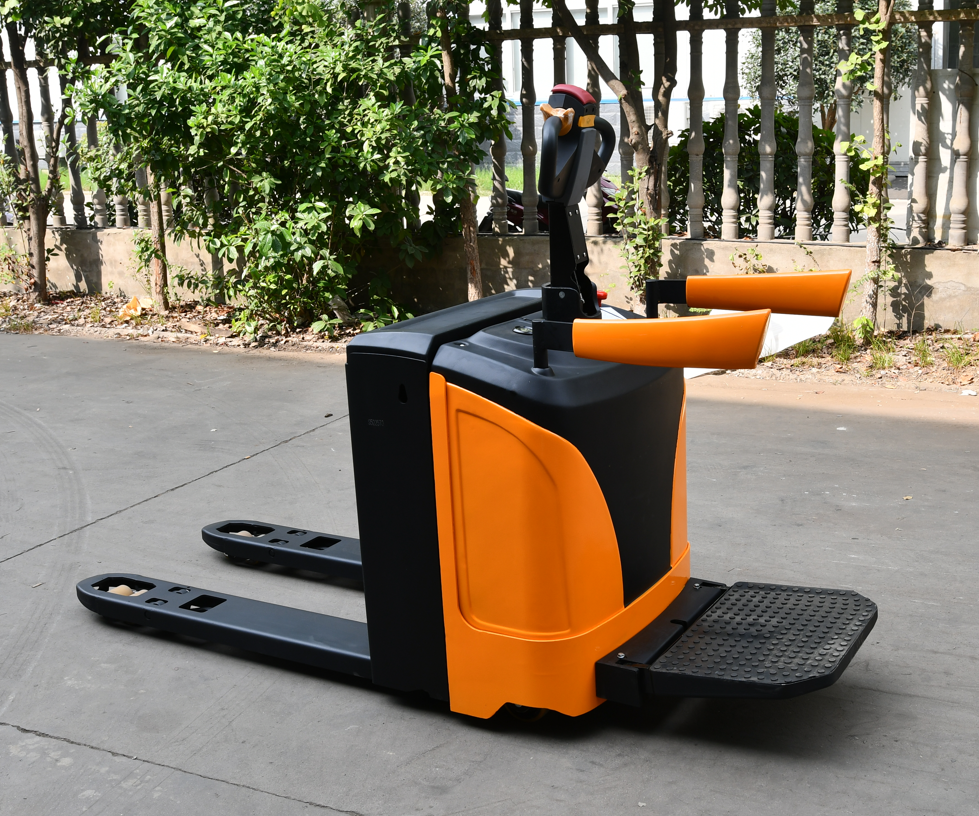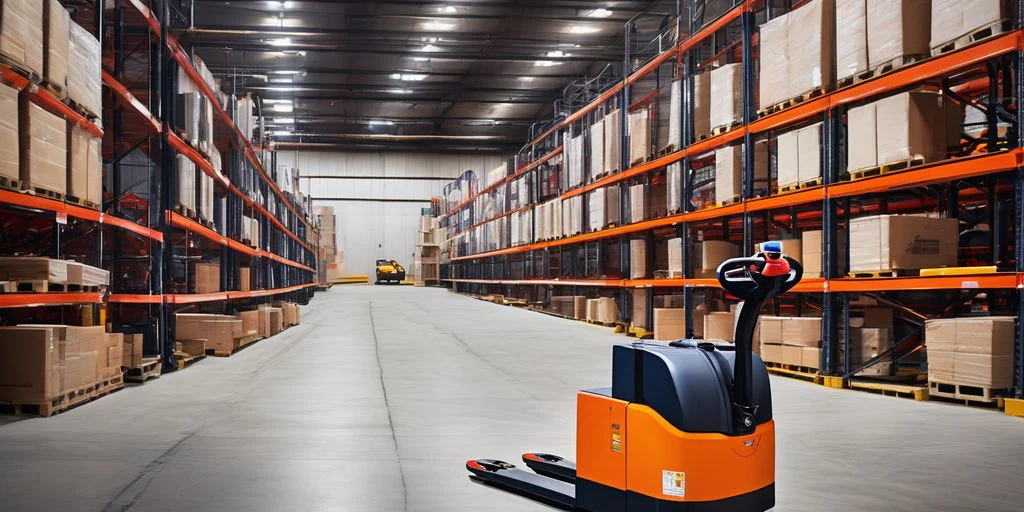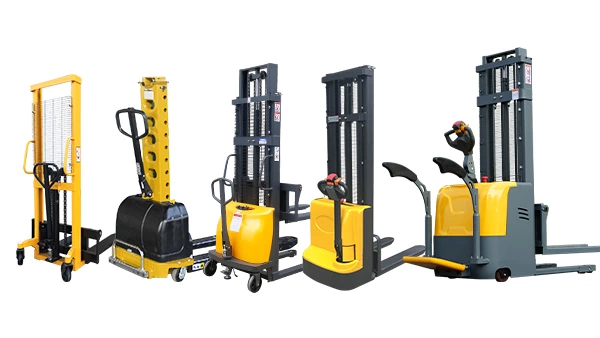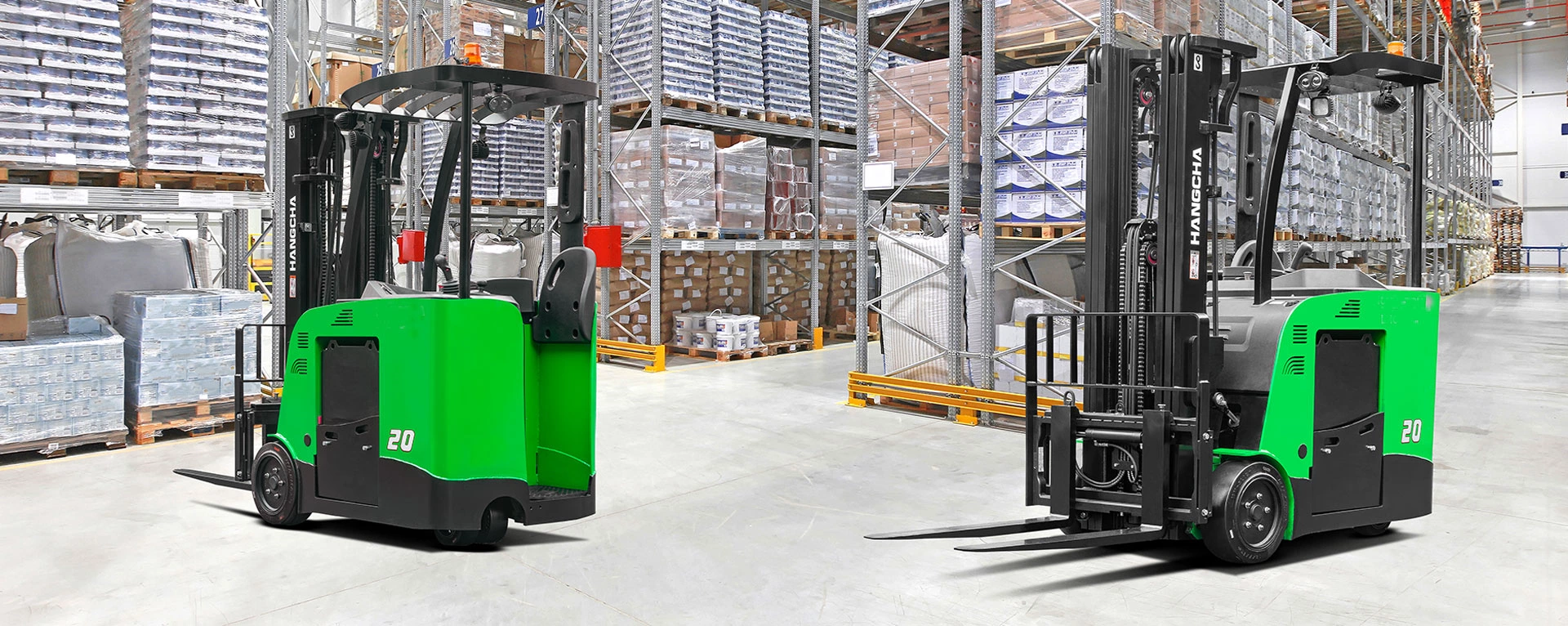The Complete Guide to Manual & Electric Pallet Trucks
Pallet trucks are essential tools in any warehouse, providing personnel with a faster, more efficient, and easier way to transport heavy inventory from one location to another. This makes them an invaluable asset in improving warehouse operations.
Learn about pallet jacks and their role in improving efficiency in warehouses and distribution centres with this comprehensive guide on pallet trucks.
What is Pallet Truck?
Pallet truck, also known as "pallet jack" or "walkies," are essential in lifting, carrying, and transporting inventory. Although commonly used in warehouses, they can also be found in commercial settings such as retail and grocery stores. These devices consist of multiple components that work together to efficiently move heavy loads.
Forks: Forks are essential components that aid in the stability and movement of materials during transportation. They are placed on the load wheels and are supported by the steer wheels and hydraulic pump. Typically, pallet trucks are equipped with dual forks designed to hold pallets securely.
Handle: The handle, found at the front of the pallet jack, enables the operator to control the wheels and steer the truck in either direction. With electric models, the handle can be twisted to move the vehicle forward or backward.
Hydraulic pump: The hydraulic pump is located at the lower section of the handle. Through controlling the handle, the truck's direction can be managed thanks to the power provided by the hydraulic pump.
Control lever: The levers on manual pallet jacks provide control over the forks, allowing you to adjust their height as needed.
Load wheels: The pallet forks rest upon the load wheels, providing an easier loading and unloading experience by distributing weight. Pallet jacks can come equipped with either two or four load wheels, depending on their specific type and model.
Steer wheels: The steer wheels are located underneath the hydraulic pump, control lever, and handle. By manipulating the handle, the operator can steer the pallet jack using these wheels. Typically, pallet trucks are equipped with two steer wheels.
Forklifts vs.Pallet Trucks
Pallet jacks and forklifts are similar, yet have notable distinctions, making them both beneficial for moving pallet loads. However, their differences lie in a few major aspects:
Size: Due to their compact size and portability compared to forklifts, pallet trucks are able to maneuver through tight spaces and narrow warehouse aisles with ease. This quality makes them highly suitable for smaller work areas where limited space is a consideration.
Load capacity: The maximum load capacity of forklifts is typically higher than pallet trucks. For instance, internal combustion forklifts and electric forklifts have a maximum capacity of 19,000 pounds, while larger pallet jacks can typically only handle up to 10,000 pounds.
Cost: Pallet trucks are generally more cost-effective compared to forklifts.
Types of Pallet Trucks
There are two primary variations of pallet jacks:
1. Electric Pallet Jacks

Electric pallet trucks are powered through an electric motor, which operates the hydraulic pump using a twistable throttle on the handle. These trucks can be powered by either lead-acid or lithium-ion batteries.
The incorporation of an electric motor improves usability, reducing the physical strain on operators and increasing overall efficiency. Despite the similarities to manual walkies, operators must still walk alongside the electric pallet jack. Electric models also come at a higher cost and require more extensive training for operators compared to their hand-powered counterparts.
Industry regulations mandate formal training and certification for electric pallet truck operators. Although manual pallet jack operators are not required to obtain certification, it is crucial that they undergo thorough training to guarantee safe and proper usage.
2. Manual Pallet Jacks

Manual pallet jacks are a common type, operated by hand with a control lever and handle for raising and lowering forks. They are ideal for handling light to medium loads and are easy to use.
Uses of Pallet Trucks
Streamline the transportation of various products throughout stores and warehouses with pallet jacks, including building materials, automotive parts, electronics, appliances, foods and beverages. Items can be loaded into different containers such as boxes, bags, drums, and crates.
Improve warehouse efficiency by using pallet trucks to expedite multiple processes, such as:
Storage and retrieval: These walkies are designed for organized pallet racking, allowing for efficient storage and retrieval. With the ability to seamlessly navigate narrow aisles, they make it easier for warehouse crews to store and retrieve pallets from different heights and locations.
Shipping and receiving: Pallet trucks are a valuable tool for efficiently unloading, transporting, and storing received shipments in warehouses. Additionally, pallet jacks greatly speed up the process of loading outbound delivery vehicles with pallets.
Order picking: Streamline the order picking process with the help of pallet jacks, which allow operators to transport multiple pallets at once. This efficient solution will reduce the number of trips required, making warehouse tasks less tedious and labor-intensive.
Benefits of Pallet Trucks
Pallet jacks are beneficial for a variety of situations where you need to transport heavy objects between different areas. They greatly simplify and expedite this task, minimizing manual lifting and moving. Here are a few benefits of using pallet jacks in your warehouse operations:
1. Enhanced Safety
When it comes to the physically demanding industry of warehousing, it's important to be aware of common injuries that can occur. Repetitive strain injuries, in particular, are often seen in warehouse settings due to the repetitive tasks involved.
- Reaching up to grab items on tall shelves
- Lifting, carrying and placing heavy boxes
- Bending down
Pallet jacks can assist in preventing fatigue caused by repetitive, labor-intensive tasks for workers. By reducing the need for manual lifting and carrying, they can foster a safer and more comfortable work environment for warehouse personnel. Additionally, they can decrease the likelihood of damaging products and maintain the quality of inventory.
2. Increased Productivity
Efficiency is essential in any warehouse, where time equals money. To improve productivity, consider using a pallet jack instead of manually lifting and carrying heavy loads.
Pallet jacks are a great solution for moving multiple pallets efficiently and quickly. They save time and reduce the number of trips required for product transportation. With walkies, pallet handling becomes easier than ever before, minimizing downtime and maximizing productivity.
3. Versatility and Flexibility
Pallet jacks are available in different sizes and configurations to accommodate various pallet sizes and weights. They are compact and easy to navigate, making them ideal for tight workspaces where larger forklifts cannot operate. These versatile machines can be used in a variety of work environments, from warehouses to retail stores, both small and large.
Choose the Best Pallet Trucks at Ronli
Discover the invaluable role that pallet trucks play in industrial environments such as warehouses, distribution centers, retail stores, and supermarkets. Our detailed guide on pallet jacks will aid in your decision to invest in a pallet truck for your warehouse operations. At Alta Material Handling, we offer a wide range of pallet truck options for both purchase and rental, including manual and electric models.
Explore our selection of pallet trucks to discover the perfect solutions for your material handling requirements. If you have any inquiries about finding the appropriate products, please reach out to our knowledgeable team.



